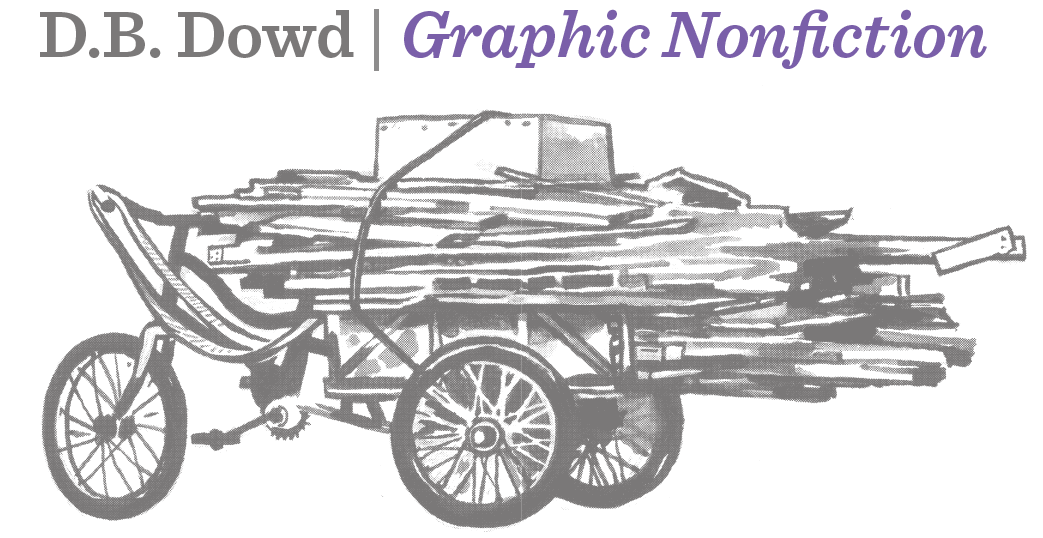Super Bowl Sunday 2025: Visual Journalism
D.B. Dowd, Sketchbook drawing from high school football game, 2008. Pencil. The notes with the illustrations for this post include thoughts about how and when things were made. The different approaches employed may be of use to you.
I have returned to teaching figure drawing this spring. The class has alternated between several sessions with a nude model interspersed with onsite work. On the off days we have used on location drawing to introduce figurative groups and genre scenes and the problem (and opportunity!) of setting. We are really just getting started, but our activities are beginning to mesh. I’m excited.
D.B. Dowd, Massillon versus St. Mary-St. Vincent, 2014. Massillon, Ohio, 2014-2018. I “saw” this picture before I worked on it. There is a tiny little marker maquette somewhere of the idea, a doodle about orange, green, and black. I built the whole thing from photo reference well after the fact, but made the underlying pencil while the experience was still fresh. Appears in Spartan Holiday No. 3.
Tonight’s post is designed to provide information and expectations for a journalistic foray: the phenomenon of Super Bowl LIX (omg can we lose the Roman numerals at this point and just say 59) to be played at the Caesar’s Superdome in New Orleans on Sunday, February 9. The game features the AFC champion Kansas City Chiefs and NFC champs Philadelphia Eagles. (Two years ago when I did this project the same two teams were playing. This time I had been hoping for a Buffalo Bills / Detroit Lions Superbowl, but t’was not to be.
D.B. Dowd, After the game. Pencil 2008, ink much later. I make brush drawings over pencils very often.
The Super Bowl is a truly grandiose spectacle. The game (often, but not always) pits two well-matched teams in a colorful mock-martial contest with real violence and unforgiving margins of error for players and coaches alike. The halftime show features major pop stars (this time, Kendrick Lamar) armies of dancers and amped-up stagecraft.
The Big Easy may be the physical site of SB 59, but 100 million people will view it live on television. In addition to following the game many will actively await commercial breaks to view new, highly ambitious (and expensive) advertisements for a wide variety of products and services.
Millions of people will gather at privately organized parties and all manner of establishments. Each of these settings is its own arena. Some track the game; some drink too much; some haul in the catering trays; some nuzzle or flirt; some bicker and leave early. Sometimes a big lead opens up and the giant monitor (or banks of them) plays indifferently.
D.B. Dowd, Halftime Talk, Clayton versus Normandy, 2008. A pencil that got turned into a goauche painting in the sketchbook, pretty soon after making the pencil.
What is your brief? Your job is to conduct research through observation, which should include drawing and some writing. The writing is just to help you contain or bracket the experience in a frame. A single sentence could function like a premise; several of them could suggest an arc.
You can limit yourself to the game itself, and use the television broadcast as a primary source. You can draw the social envelope in which the game is broadcast where you are, whether at a private party or a bar. You can explore an angle—for example, the monumentally gendered display put on by the NFL: from the exaggerated physiques suggested by shoulder pads and other aspects of team uniforms, elaborate dominance performances (say, after a quarterback sack), and the cheerleader squads, a bizarre affectation of school days. But at first, your job is to notice what you notice, and then try to capture that in words and images. I would make solid drawings, but not try to finish them. You can ink them later or try another “finishing” approach, including leaving well enough alone. In any event, assume that you cannot possibly understand the event in real time. Plan to produce a variety of materials; have a concrete record.
SECONDARILY, I also want you to generate reference material using photography and video to supplement your drawing, not to precede it. You should have these supporting materials in hand after you are done with your session. Above all, as you experience the game in your particular setting, ask yourself: what is the story???
When we meet on Monday we’ll have a look at everyone’s raw work product from the game.
Perhaps you will develop some finished work from this experience, several weeks down the road. I don’t want you to get hung up trying to engineer that. This is more of a test experience: What is it like to report on a complicated event? Give yourself to the present tense of your Super Bowl Sunday experience. Draw, write, shoot, notate. Keep in mind you could use the resources you generate later, not necessarily immediately. Above all, pay attention and have fun!
D.B. Dowd, cover, Spartan Holiday No. 3: French Lesson, 2019. A collaboration with graphic designer Scott Gericke. The eleven-year old pencil drawing shown at the top of this post was inked and used for this project.





